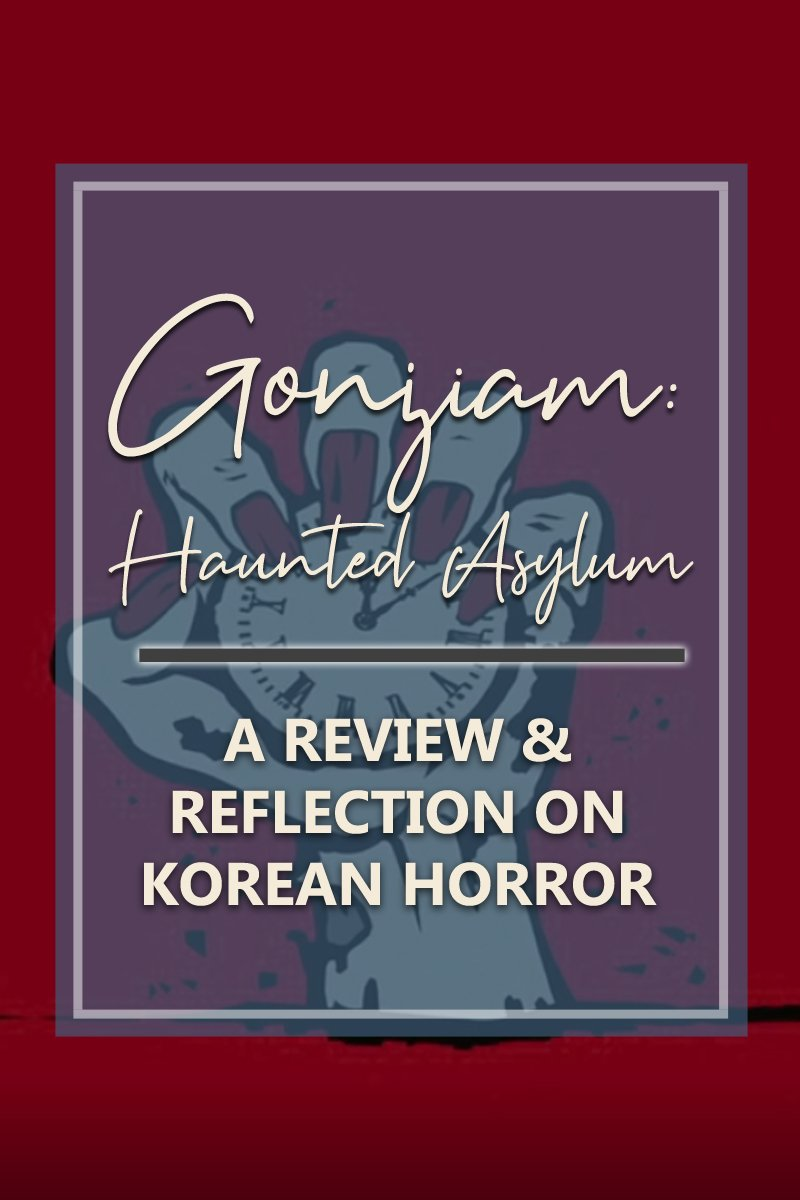
Gonjiam: Haunted Asylum | A review and reflection on Korean horror
At thirty-three years old, I am a recent fan of horror movies. I spent most of my young adulthood feeling like I wouldn’t enjoy being scared, and although some friends did get me in front of the TV for a couple scary movies, I was good at avoiding them for the most part. Then, during the peak of pandemic boredom, I decided it was time to overcome my fear, and thanks to the YouTube channel Dead Meat, I was able to do so. This led to my rabid consumption of every horror movie (the ones that sounded interesting, at least) on the streaming platforms I subscribe to, which in turn led to my fairly quick desensitization to Western-made horror movies.
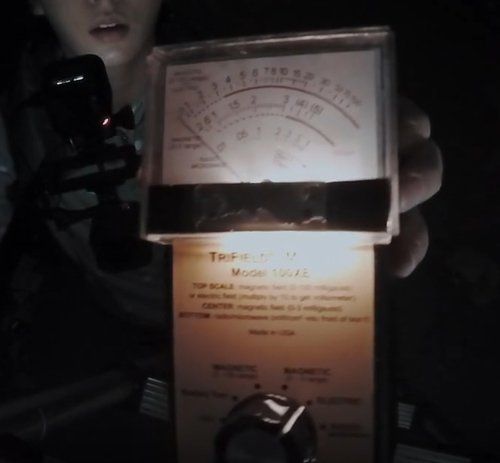
Enter horror movies from Asian countries. Granted, I knew that Japan had good enough horror to get American remakes (The Ring and The Grudge made a massive impact on the genre when I was young), but I had never actually watched any original Japanese movie before 2022. In the same vein, when I was in my late twenties I became aware of a certain Korean director making waves with a movie called Train to Busan, but I was never really a fan of zombies as a horror device, and of course, I hadn’t yet decided to face my fears back then. Nowadays however, I’m hungry for a movie that will actually frighten me, and when I went hunting for some “best of horror” lists, I discovered a general consensus among fans that some of the best horror movies out there come from Japan and Korea.
Boy is that the truth. The original Ju-on: The Grudge and the film adaptation of Junji Ito’s horror manga Uzumaki were scary in a slow, creeping way that gets under your skin and creates the sensation of true fear— as if you were there with the character —rather than just shoving as much blood and gore in your face as possible; a trend fairly common in Western horror to add lame shock scares to mediocre stories. Now, there were already a couple Korean movies on my list, but as pandemic restrictions lifted and I started being able to get outside again, movie-binging fell by the wayside as I occupied my time with hobbies.
So what brought me back to my list? The answer is simple: being an Honorary Reporter for the Korean Cultural Centre Canada/The Embassy of The Republic of Korea. In my position I’ve been afforded the opportunity to attend (virtually or in person) several Korean movies featured in film festivals across the country, and the more I watched, the more curious I became about the Korean film industry and their cinematic staples. It’s difficult to explain it in words, but Korean movies have a very distinct feeling to them, that’s close to but still completely separate from Japanese films, and when you’ve only seen Western-made movies for your whole life, it’s like opening a door into a whole new world.
Combining my thirst for a good scare and my newfound love of Asian-style horror is what brought me to the movie I’m going to talk about now; a movie that is far and away the scariest thing I have ever watched.
Gonjiam: Haunted Asylum
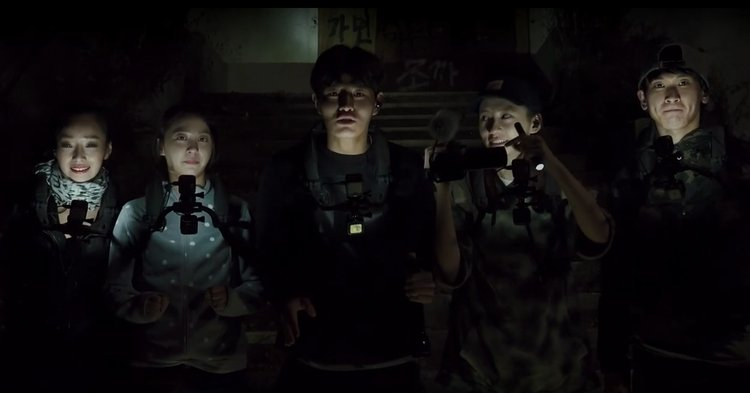
The first thing I thought— after watching about ten minutes of the movie —was how it reminded me of The Blair Witch Project, which of course was a horror movie from 1999 that kicked off over a decade of found-footage-style films ranging from monster action like Cloverfield to long-running franchises like Paranormal Activity. In Gonjiam’s case, the similarities to Blair Witch begin and end with the premise that a group of friends head out to explore a supposedly haunted area and hope to get something supernatural on camera, in order to gain some kind of notoriety. After watching the whole thing, I realized that comparing The Blair Witch Project and Gonjiam: Haunted Asylum is like comparing a bumblebee to a scorpion.
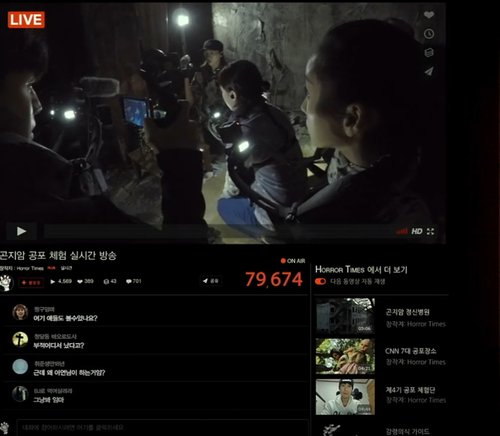
Hajoon, ostensibly the movie’s “main character”, runs a live show called Horror Times on a YouTube-like platform, in which he and his friends explore famous haunted places around the world, and his goal is to break the one million viewer mark with their latest episode. While many other horror attractions they’ve visited capitalize on tourist interest, Gonjiam Asylum is locked and boarded up, the grounds regularly patrolled by police.
The members of the cast are meant to be playing themselves, which lends more credibility to the idea of found footage horror; this “technique” was part of what made The Blair Witch Project’s viral marketing campaign so good, audiences at the time believed those people really died. Gonjiam’s casting directors did a fantastic job, hiring talented but relatively, if not completely unknown actors, who don’t act like actors at all. They are incredibly believable as real people. Although this cast does reflect many of the tropes of a horror movie ensemble, each actor brings their own unique flavor to the role, and somehow make old clichés feel fresh.
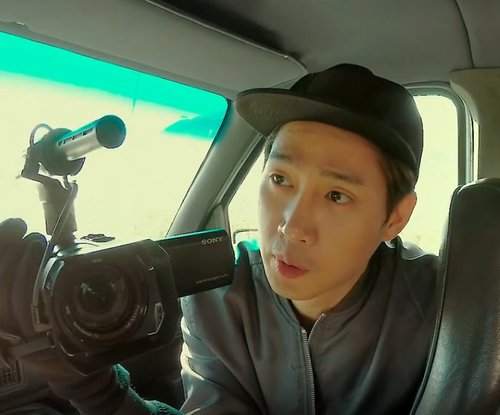
Take Charlotte, who at first glance seems to be playing the typical hot girl of the group (because seriously who wears a push-up bra and a plunging neckline to go ghost hunting?); however, as the story unfolds and more disturbing things happen, her many dimensions begin to appear, revealing that she’s in fact intelligent, assertive, knowledgeable about the occult, and nurturing towards her friends, looking out for their comfort above the production of the show. Similarly, Seonghoon appears early-on as the fearless jock type, but as the group loses control of the situation, he loses control of his mental stability, personality changing considerably by the end.
A lot of people shy away from found-footage movies because of the motion sickness effect caused by everything being shown through a handheld camcorder instead of a fancy Hollywood camera on a rig. Fortunately, Gonjiam: Haunted Asylum manages to avoid this pitfall by having their characters wear body-mounted GoPro cameras— one aimed at their face to catch their reactions, and one facing outward to record what they see —so even though there is still movement (especially when they run), most of it is way smoother than older movies working within the same style.
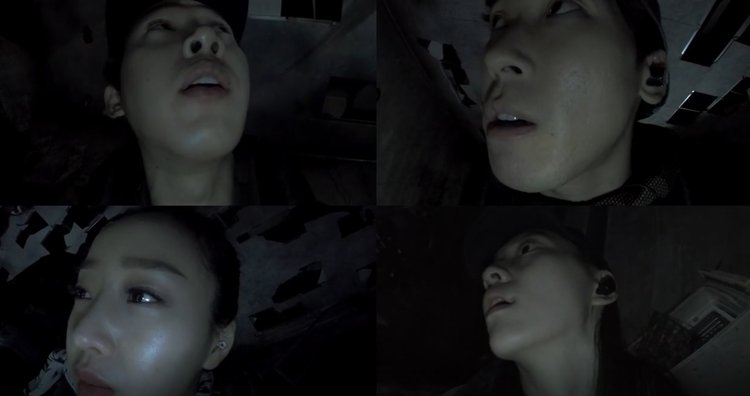
To give you a sense of the impact this movie had on just Korean audiences alone, Gonjiam is now the third most-watched horror film ever in South Korea (following A Tale of Two Sisters and Phone) despite only premiering in March 2018. Thankfully, the lawsuit filed by the previous owner of Gonjiam Asylum, which aimed to prevent the movie’s theatrical release with claims it would have a negative impact on attempts to sell the building, was struck down by a Seoul court. We are all better off when we value art above commercial prospects.

I don’t want to say very much more about the story than I already have, because I believe this movie strikes with full impact when you don’t quite know what you’re getting into. Frankly I’m still not sure I made the right decision to watch this movie alone with all the lights off… Needless to say, I’ve been burning white sage and using nightlights for the past few nights.
For the adventurers out there: sadly, Gonjiam Psychological Hospital was demolished on May 28, 2018, exactly two months after the movie’s release.
If I wanted to define the perfect horror movie, it would have to be this one; you would find it at the very top of my list of favorites now despite the fact that I’ve never been more scared in my whole life. Korean horror is on another level — one that rarely needs excessive gore in order to make your heart stop. Even if you’re not a fan of scary movies, if you’re going to allow yourself one good fright in your life that is definitely worth every nail-biting moment, please watch Gonjiam: Haunted Asylum.
You can find the original posting here